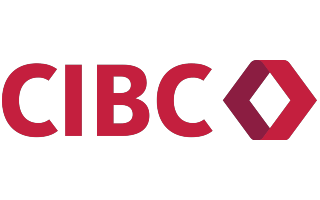As interest rates go up and down, the investment landscape can drastically change. Luckily, there’s a way to prevent your portfolio from doing the same: Diversification.
5 portfolio diversification techniques
Diversification means you’re not putting all eggs into one basket. If your portfolio consists only of Tesla and Apple, you’re not diversified. You can diversify either between industries or sectors in the stock market, or you can diversify across a variety of asset classes.
Here are 5 ways to diversify your portfolio:
1. Exchange-traded funds (ETFs)
Investing in ETFs is the easiest and fastest way to diversify your portfolio. That’s because you can buy ETFs like stocks directly from any brokerage. The difference between ETFs and stocks is that ETFs hold shares of multiple companies.
There are a variety of ETFs to choose from. You can go with:
- Equity or index ETFs that track indices like S&P 500 or Nasdaq.
- Sector ETFs like healthcare or tech.
- Crypto ETFs that track the price of Bitcoin.
- Currency ETFs that contain a basket of foreign currencies like the euro, Japanese yen and the British pound.
- Commodity ETFs that hold oil, gold and other commodities.
- Real estate ETFs that hold stocks of companies that own real estate.
- Sustainable ETFs that hold companies conscious about environmental, social and governance (ESG) aspects.
- Specialty ETFs, either inverse or leveraged, such as short Nasdaq or 3x semiconductor companies.
When to add ETFs: You can add ETFs to your portfolio at any time. However, their performance will depend on what kind of ETFs you invested in.
Drawbacks: ETFs typically have an annual fee. Luckily, the fee is relatively low, often less than 1% for many popular ETFs.
2. Cryptocurrencies
Cryptocurrencies are digital assets where transactions are verified and stored on a database called a blockchain. The blockchain is secured by cryptography, which makes transactions hard to counterfeit.
The main idea behind cryptocurrencies is that they’re decentralized — i.e. independent from any entity or government regulation. Decentralization makes it nearly impossible to manipulate crypto, such as printing more coins without the consensus of the broader network.
Cryptocurrencies are considered high-risk investments, which is why they come with high reward potential. If investing in crypto seems complicated, though, you can indirectly invest by buying shares of crypto-related companies like Marathon Digital (MARA).
When to add cryptocurrencies: You may add cryptocurrencies to your portfolio at any time.
Drawbacks: Storing and safeguarding your crypto may require extra effort. If you lose your crypto wallet keys or send cryptocurrencies to the wrong address, your coins could be lost forever.
3. Bonds or bond funds
Bonds and bond funds are popular additions to a stock portfolio. Bonds are fixed-income securities that represent loans made by investors to borrowers. The most popular type of bonds used by investors is government bonds, also known as treasury bills.
Since the government guarantees to repay the loan, treasury bills are considered among the safest investments you can make. However, this means that the return is typically low compared to riskier assets like stocks and cryptocurrencies.
Bond funds, as the name suggests, are funds that hold a variety of bonds — either from different countries or companies or from different maturity dates, say from 6 months to 10 years.
When to add bonds: Bonds are typically a great option in times of heightened volatility and uncertainty. They provide steady income and can preserve your capital in the long run.
Drawbacks: Inflation can eat up the bond’s value, which makes them a poor choice during times of high inflation. Also, if the bonds are corporate, the company could default and make your bonds worthless. This shouldn’t apply to Canadian treasury bills because the risk of the Canadian government defaulting is low.
4. Commodities
Commodities are essential goods and raw materials like oil, natural gas, gold, and corn. The exchange of commodities often goes through futures contracts or options on specialized exchanges.
Luckily, you can invest in commodities indirectly via stocks or exchange-traded funds (ETFs). For example, investing in oil companies when the price of oil is rising is likely to have a positive impact on these companies. This will reflect in their share prices.
When to add commodities: Commodities typically perform well in times of high inflation.
Drawbacks: Political unrest, wars and foreign events can have a major impact on commodity prices. Keep in mind, the effect on prices can also be positive for investors, especially if there are supply issues and rising demand.
5. Real estate and real estate investment trusts (REITs)
Adding real estate into the mix diversifies your portfolio even further. You can do so by either directly purchasing real estate or investing in REITs.
REITs typically own commercial real estate that provides income, which is then redistributed among investors like a dividend. This makes REITs a fixed-income asset similar to bonds.
When to add real estate and REITs: You can add this type of investment to your portfolio at any time.
Drawbacks: The dividends you earn from REITs can sometimes be taxed as ordinary income. Dividends can also be affected by high inflation.
Open an investment account
Finder Score for stock trading platforms
To make comparing even easier we came up with the Finder Score. Trading costs, account fees and features across 10+ stock trading platforms and apps are all weighted and scaled to produce a score out of 10. The higher the score, the better the platform—it's that simple.
Bonus: Alternative assets
The five assets we’ve listed are the more popular diversification options. However, there are alternative assets that you can invest in, such as art, collectibles and luxury goods.
You can add alternative assets to your portfolio via a trading platform or a special fund.
For example, some funds own assets like NFTs, startups, cryptocurrencies, art, collectibles, wine and more. By investing in such funds, you get to own a portion of these types of assets in the form of shares (you own items fractionally, not wholly). On the downside, there may be a high upfront investment.
Bottom line
- Diversify your portfolio by investing in assets like bonds, cryptocurrencies, commodities, real estate and ETFs.
- You can also diversify by using stocks from companies that have exposure to alternative assets.
- ETFs offer the highest diversity of investment options.
Frequently asked questions
More guides on Finder
-
7 oil tanker stocks to watch
Want to invest in oil tanker companies? We’ve put together a list of oil tanker stocks you should keep your eye on.
-
4 diamond stocks to watch
Want to invest in diamond companies? We’ve put together a list of diamond stocks you should keep your eye on.
-
8 sports stocks to watch
Want to invest in sports companies? We’ve put together a list of sports stocks you should keep your eye on.
-
What is a stop-loss order?
Learn how a stop-loss order can help you limit losses or lock in profits when trading.
-
Best renewable energy stocks
These are the best renewable energy stocks to buy now in Canada.
-
10 gold stocks to watch
Check out some of the best gold stocks to buy right now in Canada based on company performance.
-
Best stocks to buy right now in Canada
Finder’s unique algorithm found the 20 best TSX stocks to buy right now.
-
Guide to 10 of the best ETFs in Canada
Learn how to choose the best ETFs to buy right now in Canada.
-
What is micro-investing?
Round up your spare change into big bucks with Canadian apps designed for saving, depositing and investing.
-
Best investment accounts in Canada
Compare defensive and growth investments to find the best investment accounts in Canada for you.






